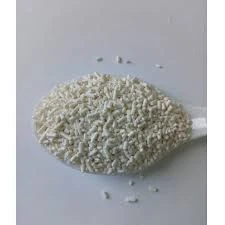
Innovative Uses of Stabilizers and Thickeners in Food and Industrial Applications
Stabilizers and Thickeners Essential Ingredients in Food Technology
In the culinary world, the quest for perfect texture and consistency is relentless. Stabilizers and thickeners play a crucial role in achieving these desired qualities in a wide range of food products. They are widely used in the food industry to enhance the mouthfeel, appearance, and overall stability of different items, from sauces and soups to ice creams and jellies. Understanding the nature, types, and functions of stabilizers and thickeners can lead to more innovative and appealing food products.
What Are Stabilizers and Thickeners?
Stabilizers and thickeners are ingredients that modify the viscosity or texture of food products. Though they serve similar purposes, their specific functions can differ. Thickeners primarily increase the viscosity of a liquid, making it thicker and providing a fuller mouthfeel. Common examples include cornstarch, gelatin, and agar. Stabilizers, on the other hand, help maintain the physical and chemical properties of food over time, preventing separation and improving shelf life. Typically, stabilizers include ingredients like pectin, xanthan gum, and carrageenan.
Importance in Food Production
The significance of stabilizers and thickeners cannot be overstated. They offer numerous benefits
1. Texture Improvement Thickeners enhance the mouthfeel and consistency of liquid products. For example, sauces and gravies benefit from thickeners like cornflour, which not only add thickness but also provide a glossiness that appeals to consumers.
2. Emulsion Stabilization Stabilizers prevent the separation of mixtures, particularly in emulsions like salad dressings and mayonnaise. Using stabilizers like egg yolk or mustard can create a more stable emulsion, resulting in a product that retains its homogeneity over time.
3. Shelf Life Extension Thickeners and stabilizers extend the shelf life of food products by maintaining texture and preventing spoilage. For instance, xanthan gum is known to improve the stability of sauces and dressings, ensuring they remain appealing even after prolonged storage.
4. Appearance Enhancement The visual appeal of food is vital in attracting consumers. Ingredients like guar gum can help create a smooth, shiny finish that enhances the aesthetic appeal of sauces and desserts.
Common Types of Stabilizers and Thickeners
stabilizers and thickeners

1. Starch-Based Thickeners These are derived from plants and include types such as cornstarch, potato starch, and tapioca starch. Starches are versatile and widely used in both hot and cold applications.
2. Gums and Hydrocolloids This category includes xanthan gum, guar gum, and locust bean gum. These ingredients create viscosity and can also stabilize emulsions. They are often used in gluten-free baking to provide structure.
3. Gelatin A protein derived from animal collagen, gelatin is a powerful thickener used in products like jelly, gummy candies, and desserts. Its gelling properties allow for the creation of stable, textured products.
4. Pectin Commonly used in jams and jellies, pectin is a natural polysaccharide found in fruit. It acts as a gelling agent and stabilizer, helping to create a gel-like consistency.
5. Agar A vegetarian alternative to gelatin, agar is derived from seaweed and used to thicken and stabilize foods. It is particularly popular in vegan cooking and offers a similar gelling capability without animal derivatives.
Considerations and Challenges
While stabilizers and thickeners bring numerous advantages, food manufacturers must also consider various challenges, such as dietary restrictions and consumer preferences. With the rise of plant-based and gluten-free diets, there is a growing demand for natural and clean-label ingredients. Manufacturers are increasingly exploring alternatives to synthetic additives, opting for natural thickeners like arrowroot or sweet potato starch that resonate with health-conscious consumers.
Moreover, when incorporating stabilizers and thickeners, it’s crucial to ensure their compatibility with other ingredients in a formulation. The right balance is essential to achieving the desired texture without compromising flavor or health benefits.
Conclusion
Stabilizers and thickeners are indispensable components in food technology, enhancing taste, texture, and stability in a variety of products. As consumer preferences evolve towards natural and healthier options, the food industry continues to innovate, exploring new sourcing and formulation strategies. Understanding the roles and functionalities of these ingredients enables manufacturers to create appealing, consistent, and high-quality food products that meet the demands of today's consumers.
-
Pure Sodium Dichloroisocyanurate Dihydrate | Powerful DisinfectantNewsAug.29,2025
-
Industrial Chemicals: Quality & Purity for Every IndustryNewsAug.28,2025
-
Nitrile Rubber Honoring Strict Production StandardsNewsAug.22,2025
-
Aspartame Ingredients Honoring Food Safety ValuesNewsAug.22,2025
-
Fertilizer for Balanced Plant NutritionNewsAug.22,2025
-
Cyanide Gold Processing with High Purity AdditivesNewsAug.22,2025
-
Formic Acid in Textile Dyeing ApplicationsNewsAug.22,2025
Hebei Tenger Chemical Technology Co., Ltd. focuses on the chemical industry and is committed to the export service of chemical raw materials.
-

view more DiethanolisopropanolamineIn the ever-growing field of chemical solutions, diethanolisopropanolamine (DEIPA) stands out as a versatile and important compound. Due to its unique chemical structure and properties, DEIPA is of interest to various industries including construction, personal care, and agriculture. -

view more TriisopropanolamineTriisopropanolamine (TIPA) alkanol amine substance, is a kind of alcohol amine compound with amino and alcohol hydroxyl, and because of its molecules contains both amino and hydroxyl. -

view more Tetramethyl Thiuram DisulfideTetramethyl thiuram disulfide, also known as TMTD, is a white to light-yellow powder with a distinct sulfur-like odor. It is soluble in organic solvents such as benzene, acetone, and ethyl acetate, making it highly versatile for use in different formulations. TMTD is known for its excellent vulcanization acceleration properties, which makes it a key ingredient in the production of rubber products. Additionally, it acts as an effective fungicide and bactericide, making it valuable in agricultural applications. Its high purity and stability ensure consistent performance, making it a preferred choice for manufacturers across various industries.





